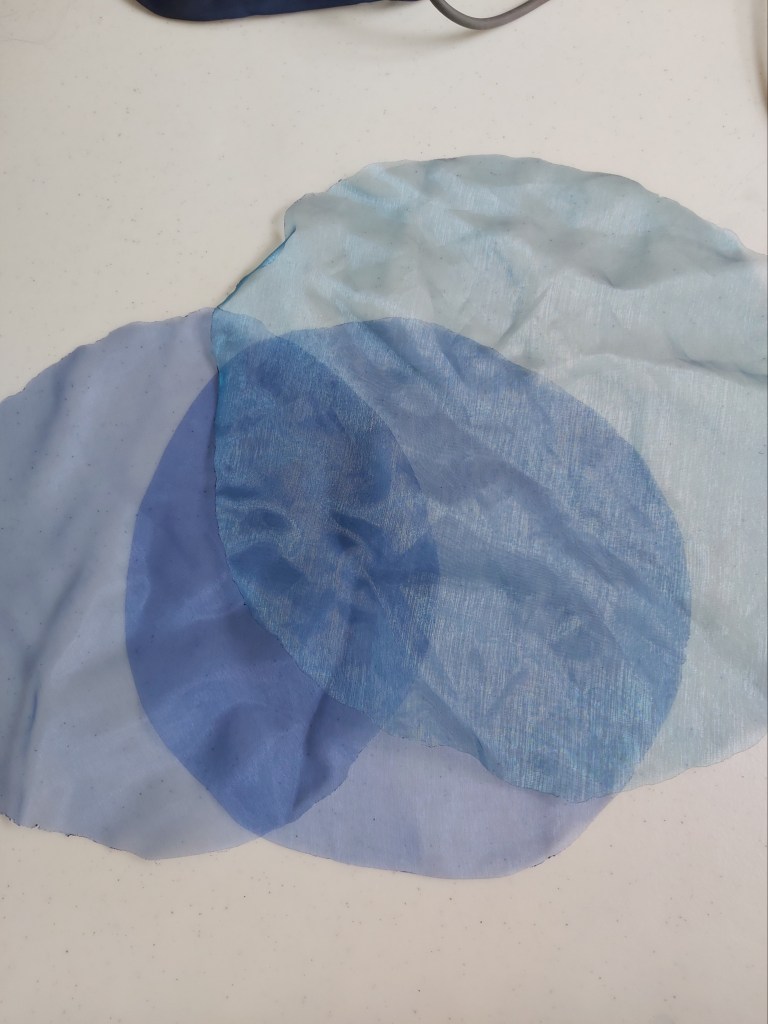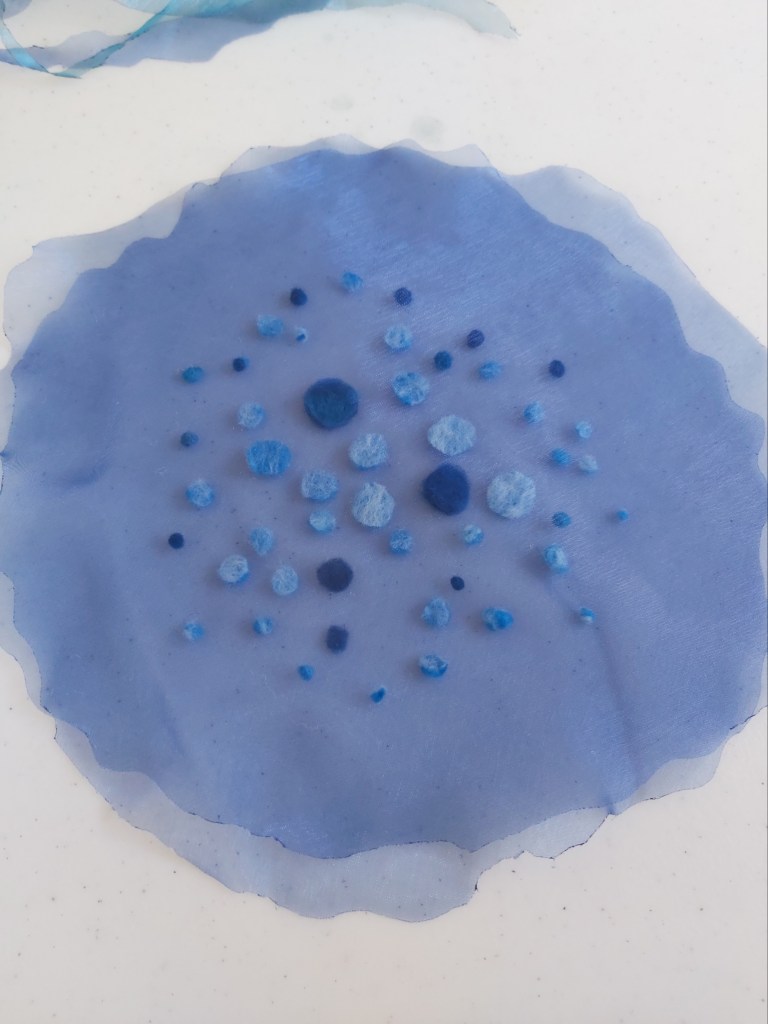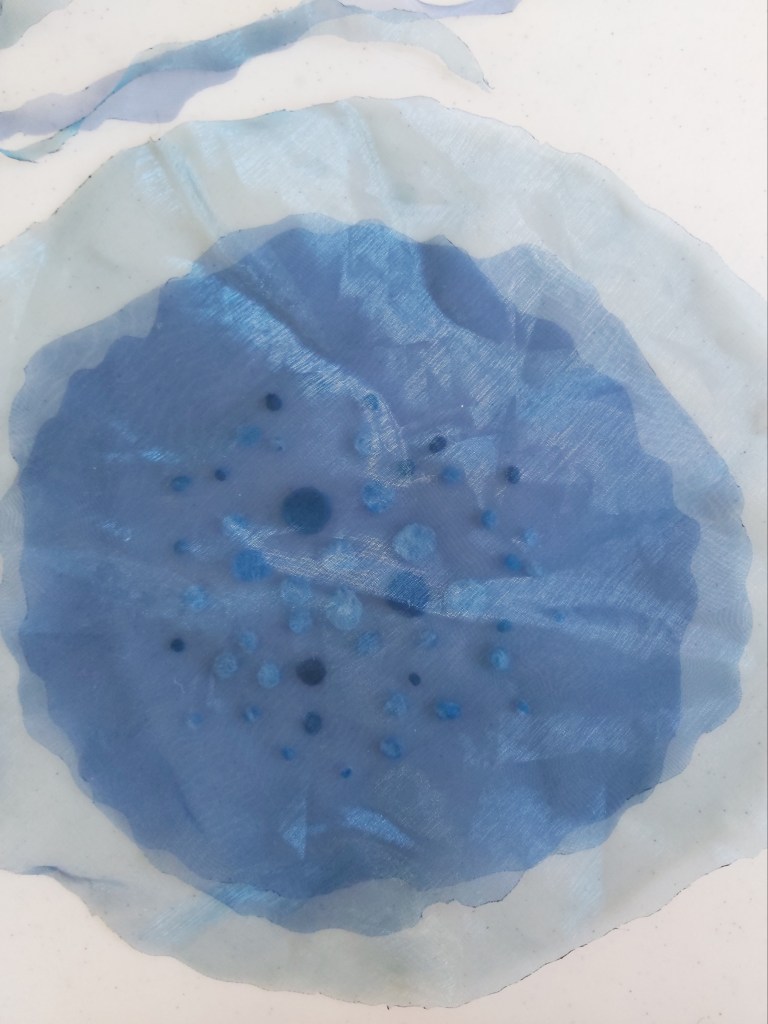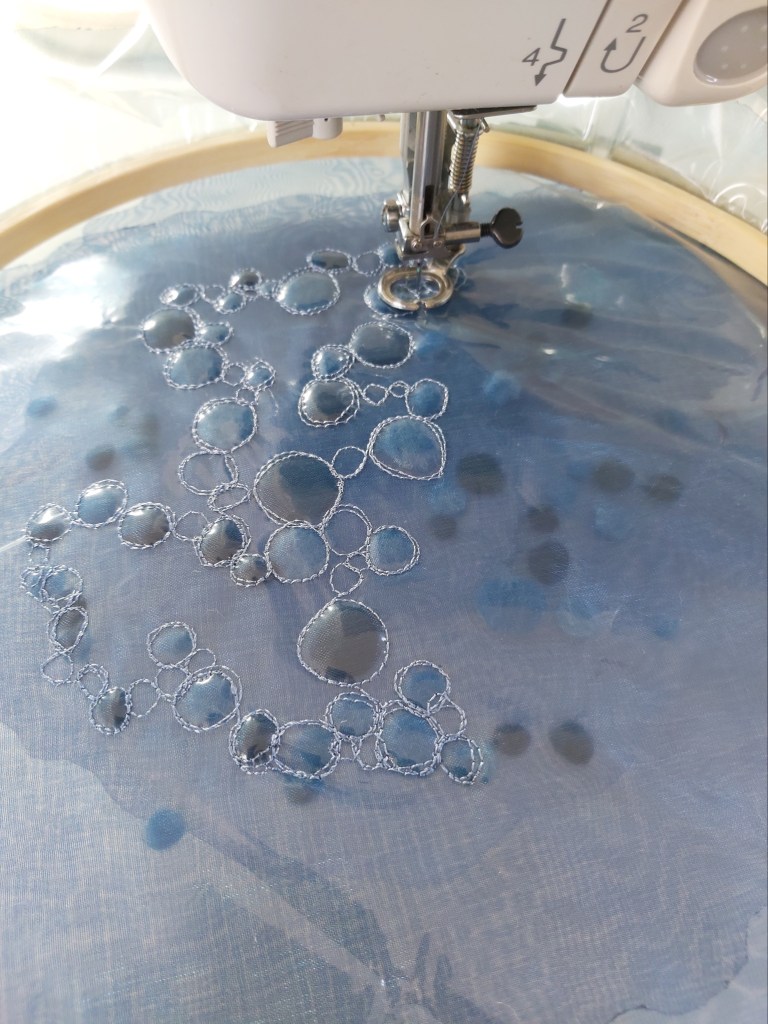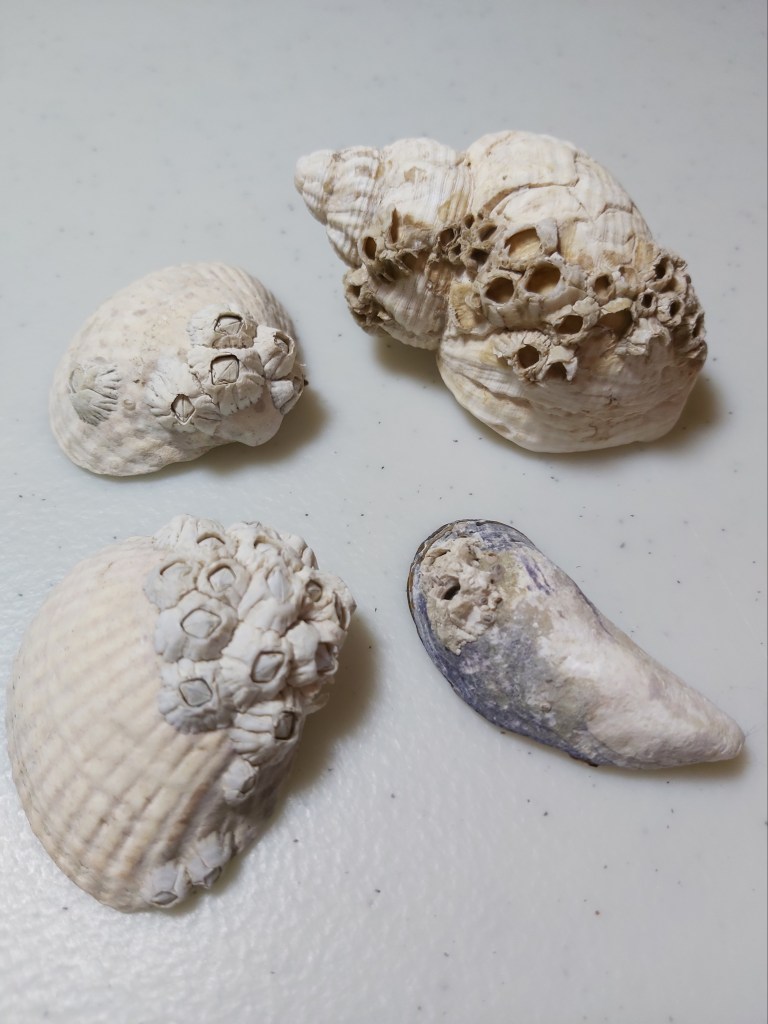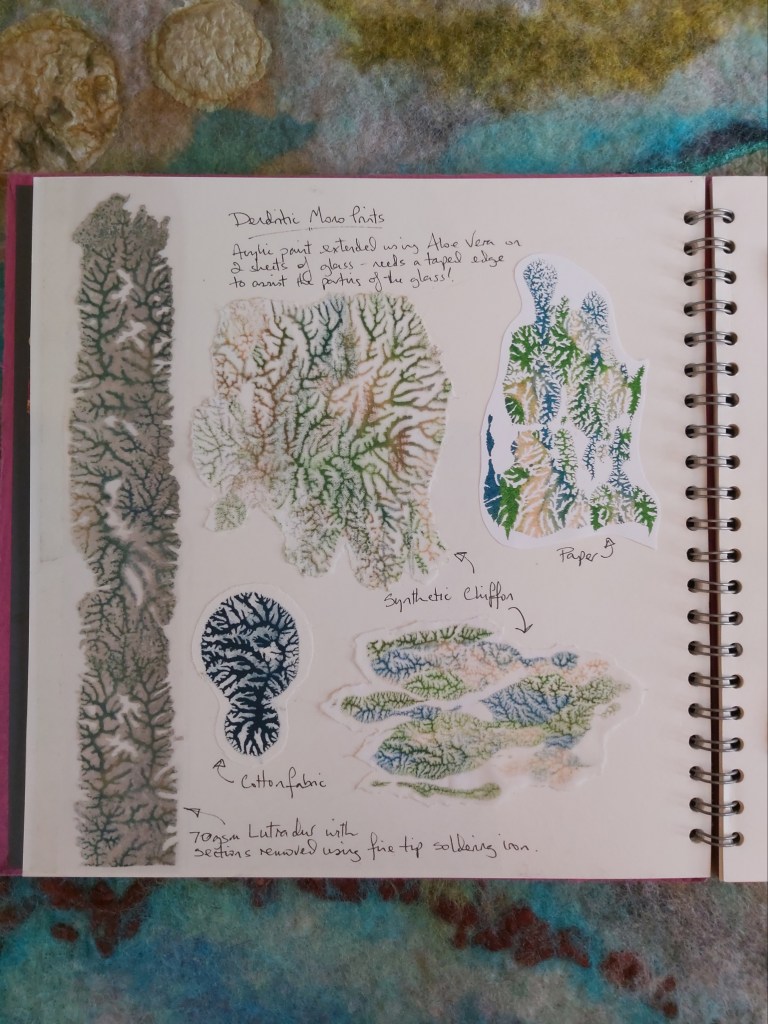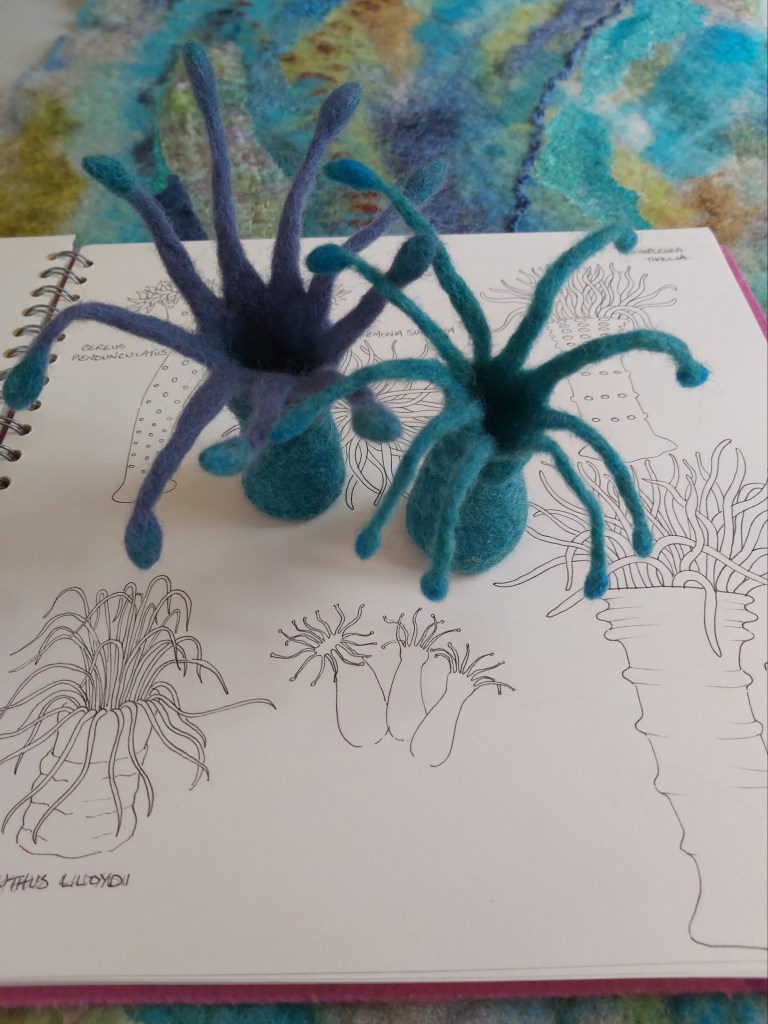As part of the Waltham Windmill “Making Waves” challenge all members will have a metre wide wall space at next years exhibition to use as they wish. It’s too early to know for sure what I’m going to be putting up in my space (no shortage of ideas though!) but one possible piece could be this wet felted wallhanging I’ve called “Going with the Flow”. The inspiration for this came from the wonderful, wavy markings on the large stone slabs on Seahouses beach in Northumberland. This is one of my favourite spots in the UK and I took these photos a couple of years ago knowing that one day they would inspire a piece of work.
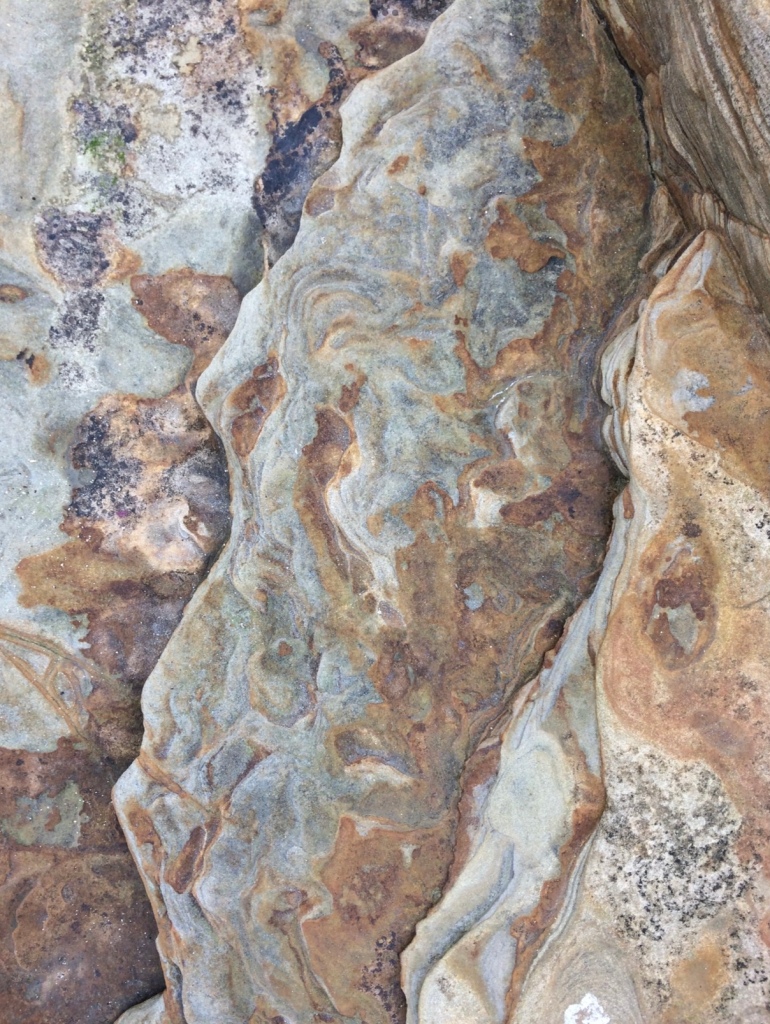
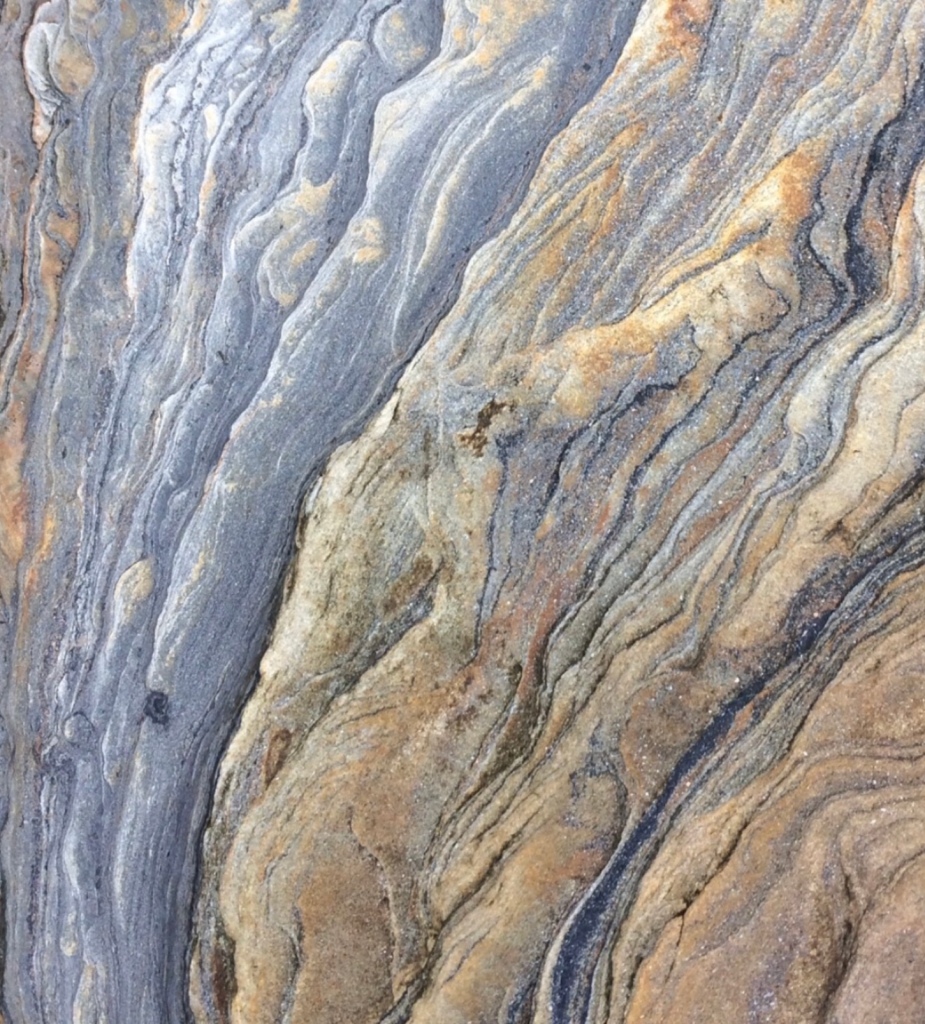
For the background I pulled out my box of oddments, short lengths of fibre left over from various projects, not enough to put back in their pack but too much to throw away…..not that I ever throw any fibre away! I recently bought myself a drum carder from Richard Britton and had fun carding all those oddments before laying them out.

This is how it looked after felting with silk fabrics, silk fibres, knitting yarn and nepps. I liked the silk circles bottom left but wanted them more 3D so they were removed and replaced with hand dyed fabric discs, recycled from another project.

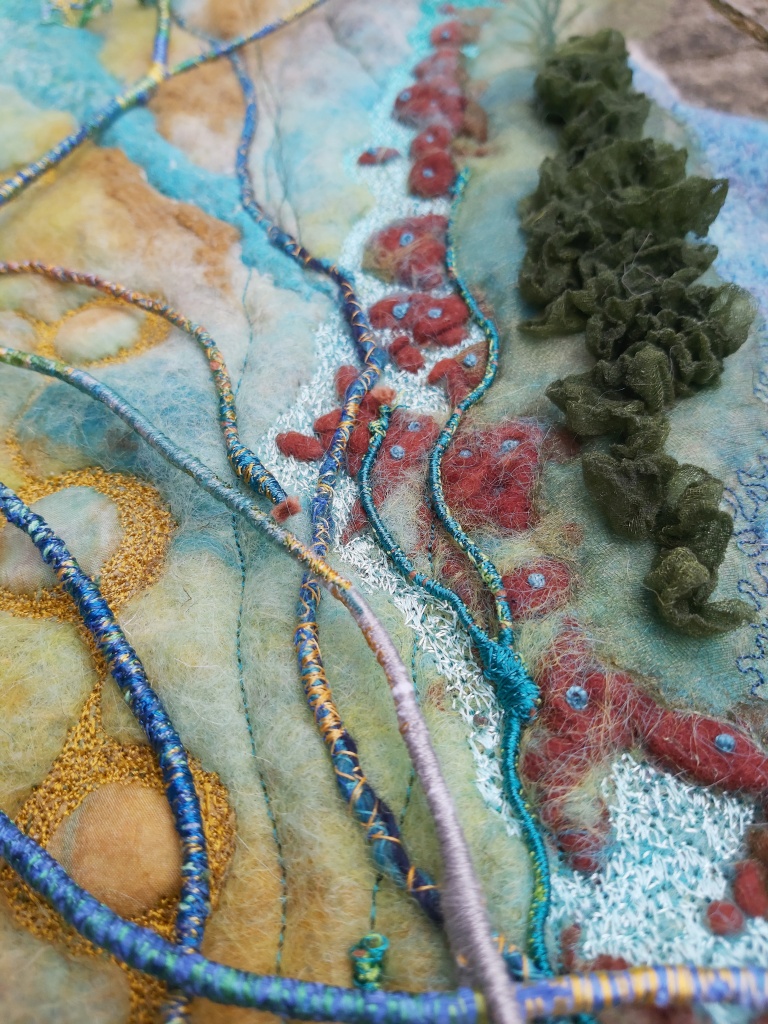
I didn’t have a sketch, or a plan, for where I was going but I like to work this way, I tend to make a start with a few lines of free motion stitch and see where it takes me. It would be far quicker to have a plan as it would avoid all of the attaching and removing and repositioning until it looks right, but I really do enjoy that process!

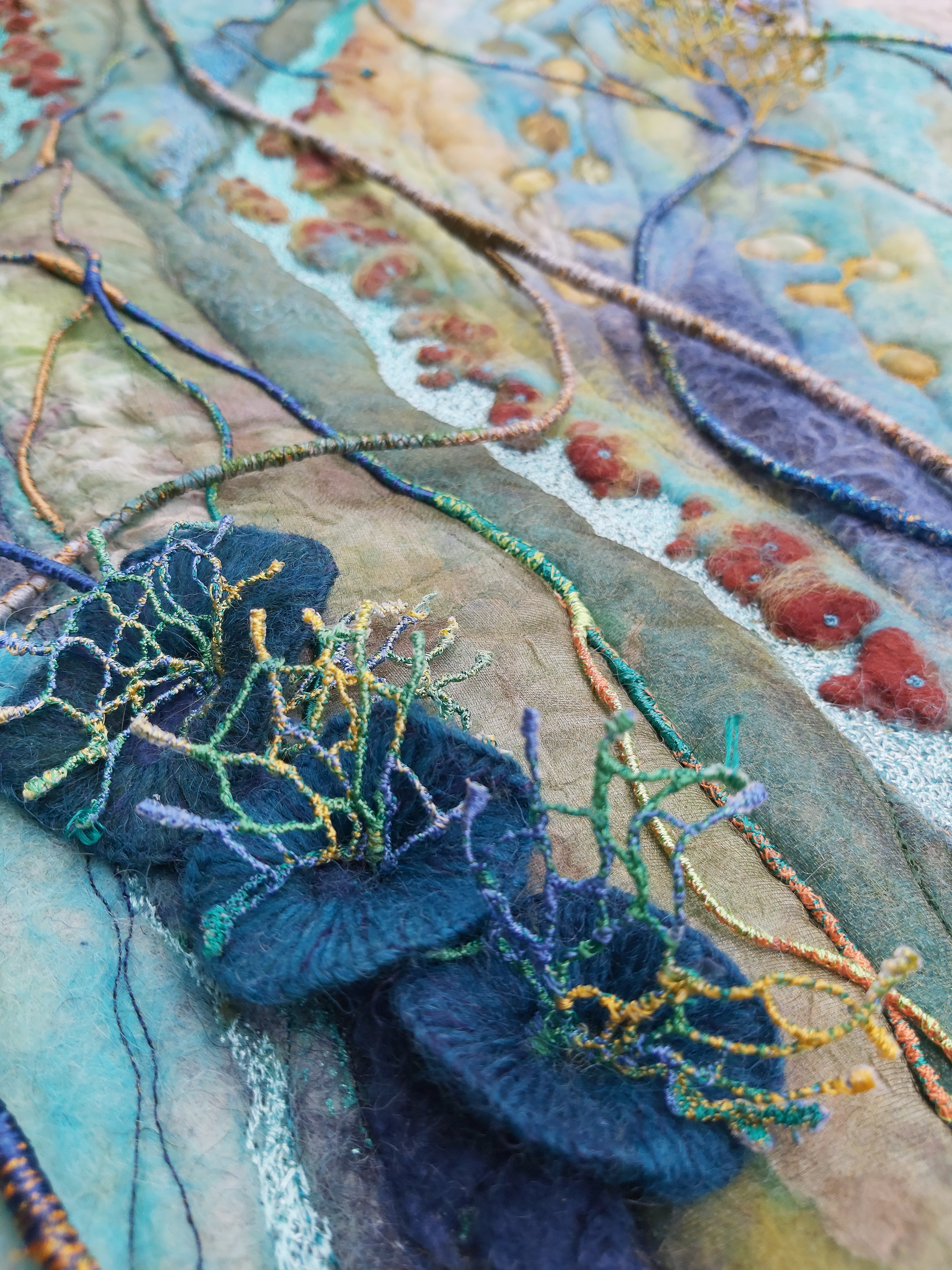
Its been several months in the making but I’ve thoroughly enjoyed working on it using a combination of free motion stitch, hand embroidery, recycled fabrics and coffee capsules, sheer fabrics, hand painted silk fabrics and machine wrapped cords.
Another of the specific items we’ve been challenged with for the Making Waves exhibition is a fish. I immediately decided I was going to wet felt mine which lead to us having a in-house felted fish workshop and the creation of TroutPout! She’s made from carded Corriedale and is approximately 33cm x 36cm excluding the fins.
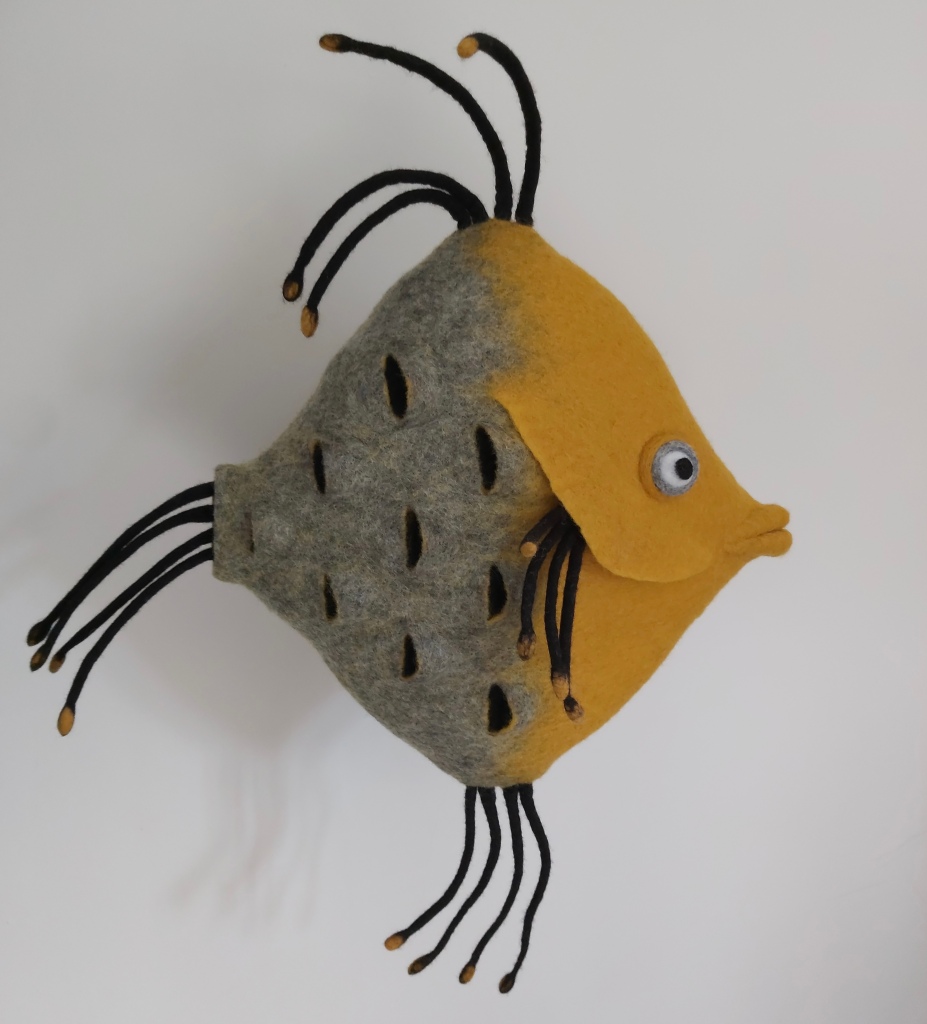
These are some of the other fabulous fish that members have made so far, this one is Barbara’s scary Fangtooth…..
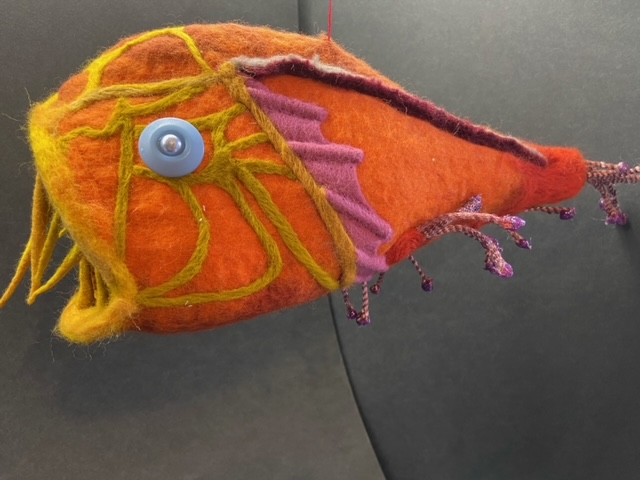
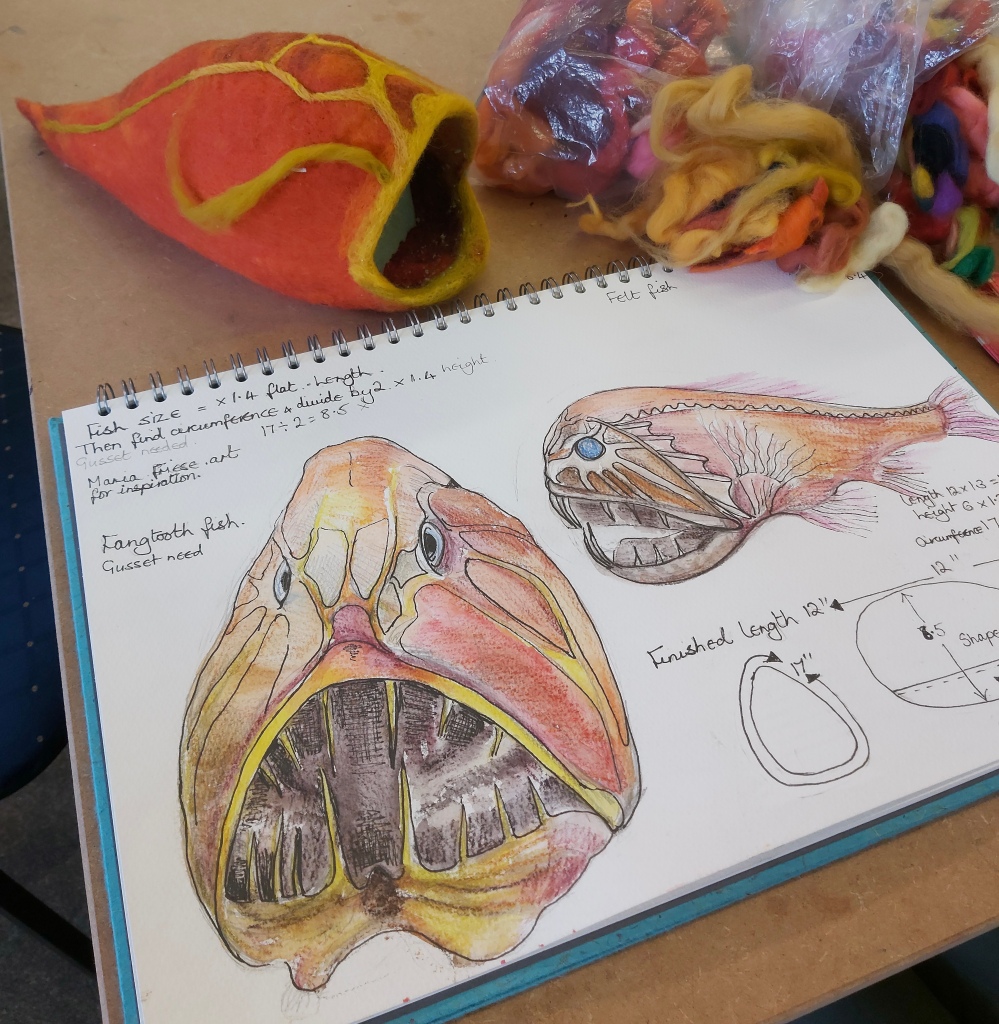
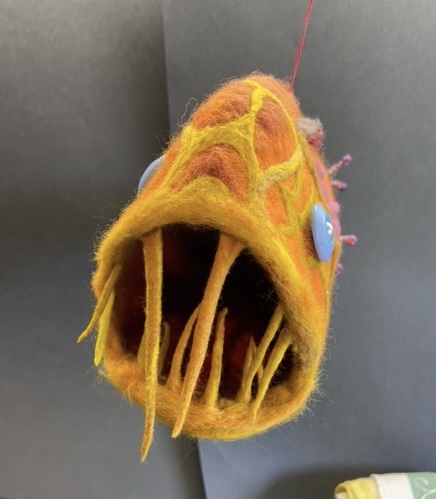
Lucy made a wonderful wet felted Puffer Fish adding recycled plastics, including pipette tips, wine bottle netting and glass beads with recycling symbols underneath, to highlight the plight of our oceans.


Sue is new to wet felting but she’s taken to it like a fish to water (couldn’t resist!) and has made “Angry Fish”. I think he looks more sulky than angry but he’s terrific!

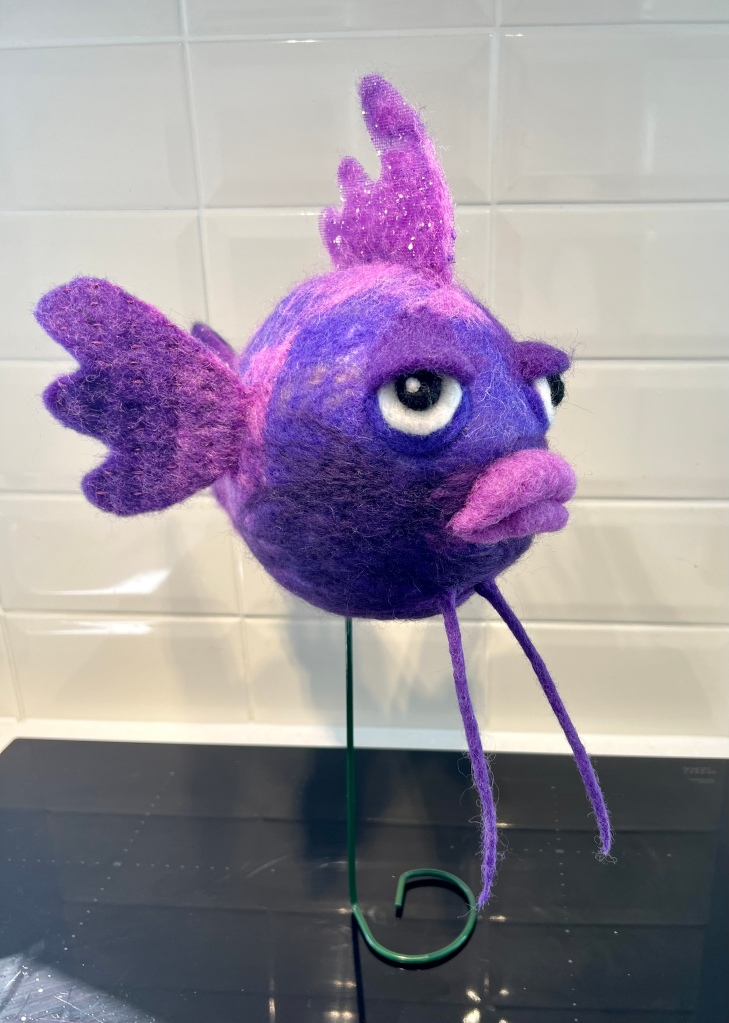

And there are several others that are work in progress….

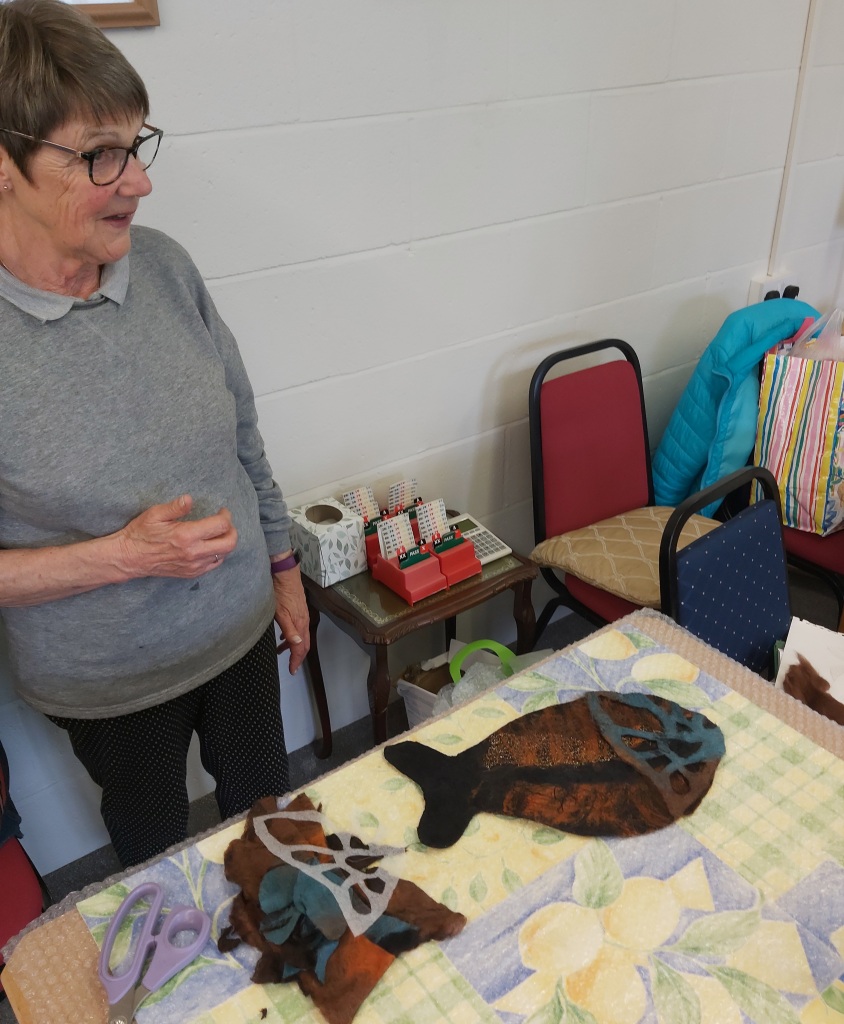

I’ve been teaching 3D Seed Pod workshops recently using wire wrapped with Tyvek fabric and decided I’d also like to make an Anglerfish from wire rather than fibre. It was only when I’d got the 60cm x 33cm framework made that I sat back and realised I’d gone past the stage where I had meant to start adding my fabric! Time for plan B…..maybe I could use wire mesh to give it “body”?
I looked for some online but hesitated as I wasn’t sure how flexible or suitable the mesh would be. Having put the fish to one side, a few days later I joined the Lincolnshire Textile group and at my first meeting I was offered a piece of silver coloured Sinamay. Sinamay is one of the most popular hat-making foundations. It’s woven from the processed stalks of the abaca tree, a type of banana native to the Philippines. I couldn’t believe my luck……..being silver coloured this off cut looked like wire mesh but wasn’t and if I sprayed it lightly with water I could shape it to fit and stitch it with aluminium wire to my framework. So this is Wanda, also known as “Gone Fishing!” made with a combination of galvanised, aluminium and beading wire and Sinamay. She wasn’t easy to photograph as I didn’t have large enough sheets of black card but hopefully enough detail is showing.
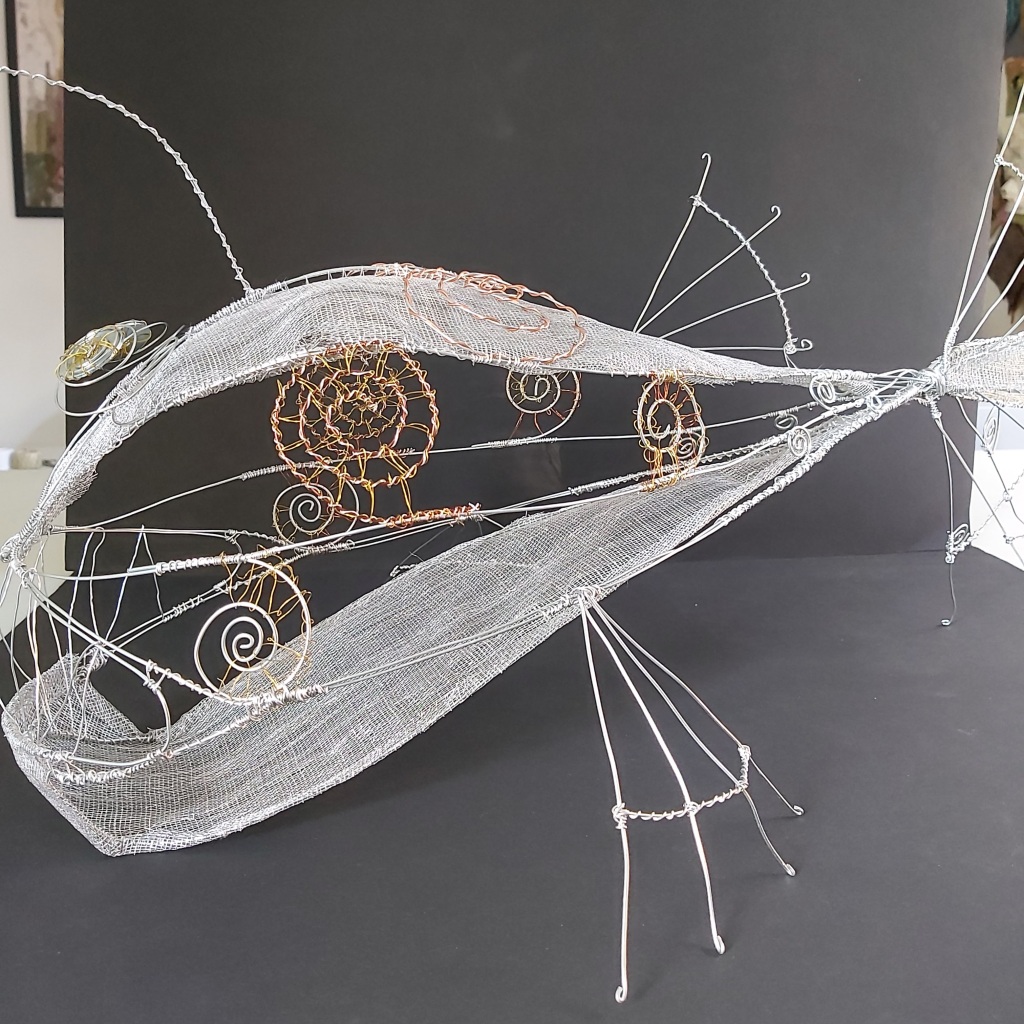

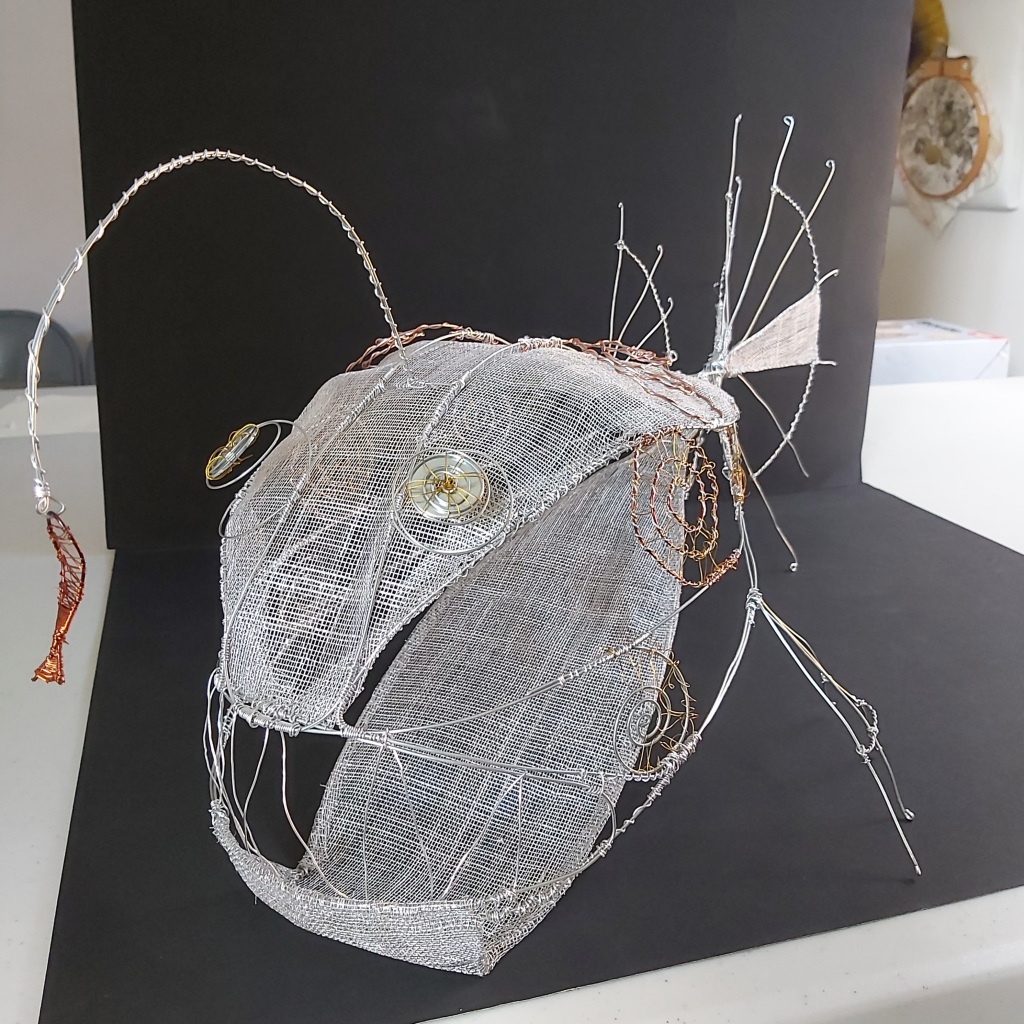
Another feature of our exhibition will be the Octopus’s Garden so we will be needing a few Octopus and a variety of coral decorate it…..my collection is steadily growing!

I mentioned having joined the Lincolnshire Textile Group and, as luck would have it, their current theme, and next years exhibition, is “Water” so sits nicely with the Waltham theme. It’s good to know I can carry on creating ocean inspired work for at least the next 12 months!

